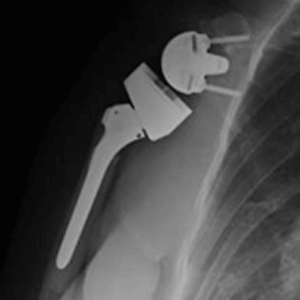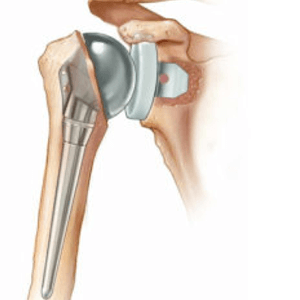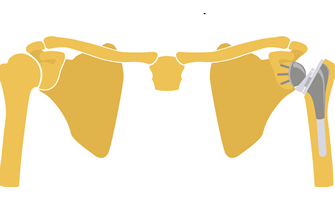Shoulder Replacement

Shoulder Surgery
Joint replacement is one of the most successful procedures in modern medicine. The surgical treatment of shoulder arthritis and other disorders by shoulder replacement is typically very reliable in reduction of pain and improvement in function. Total (also known as full or complete) shoulder replacement (TSA) involves resurfacing the socket and replacing the ball of the ball and socket shoulder joint where the articulating surfaces are exposed, usually due to severe cartilage wear or joint damage. The joint surfaces are replaced with metal on both sides, and a durable plastic placed in between. As such, there is no more bone rubbing on bone, but rather metal articulating with a new plastic bearing, thereby re-establishing the joint mechanics and dimensions.
This document is intended to provide information regarding total shoulder replacement, less invasive surgery, risks and benefits of the procedure, outpatient joint replacement, and state-of-the-art surgical techniques.

The shoulder joint, also known as the glenohumeral joint (GH), primarily consists of a ball and socket made up of the round ball of the humeral head and the concave socket of the glenoid.


Shoulder replacement surgery is one of the most successful procedures available in modern medicine. For patients with severe shoulder osteoarthritis with or without rotator cuff injury or other disorders, a shoulder replacement restores function and alleviates pain. Patients can return to most activities and regain their active lifestyle. Durability is expected to achieve excellent results for decades. Risks and complications are infrequent, and techniques and protocols are constantly modified to reduce risks even further.






